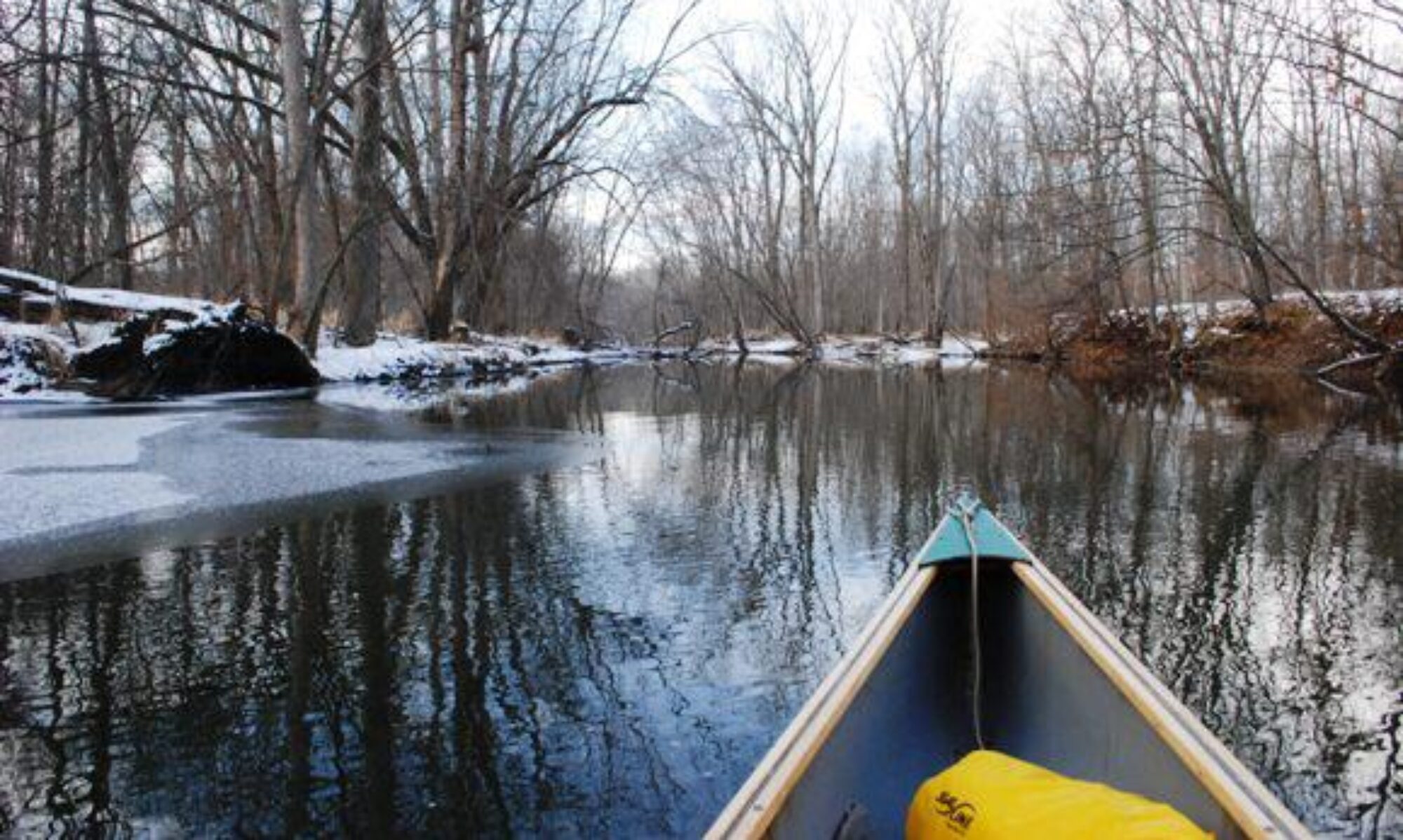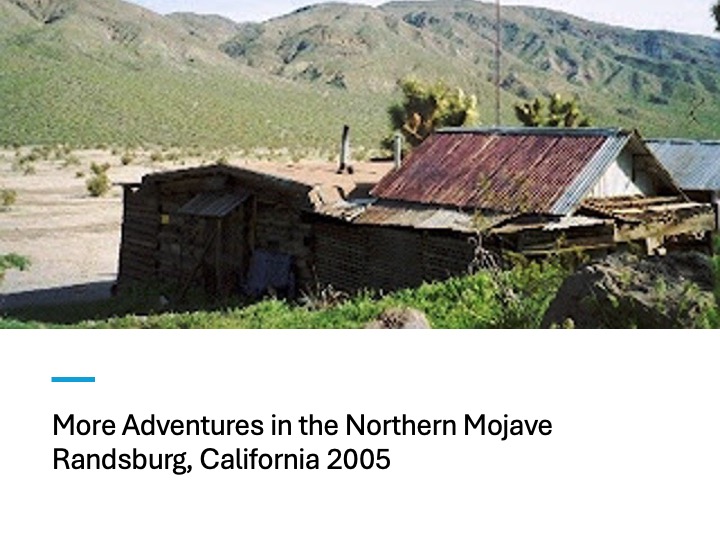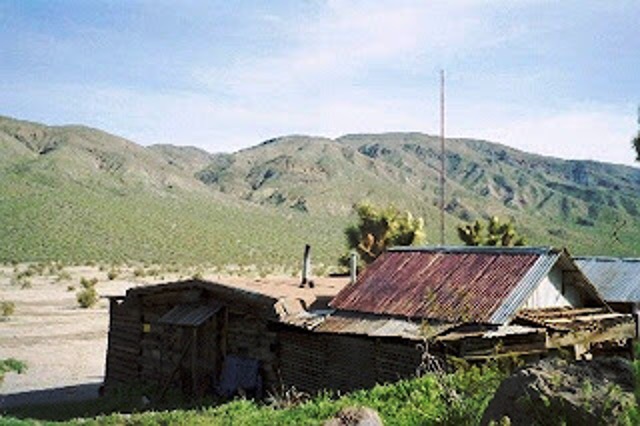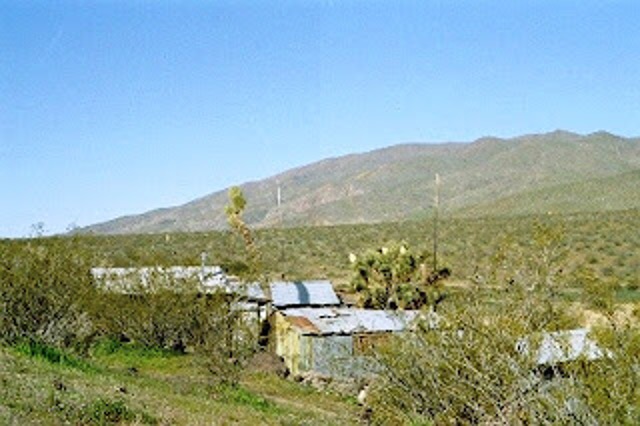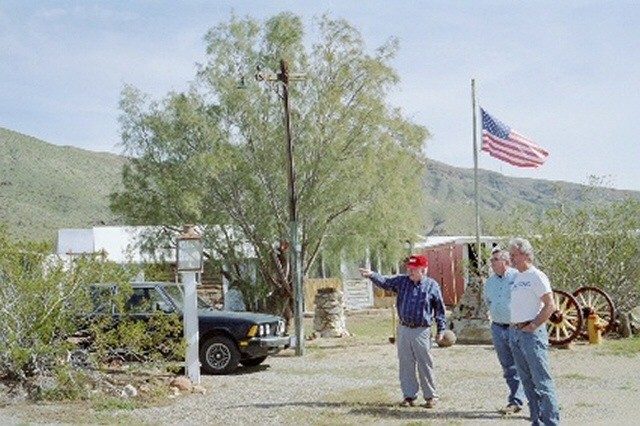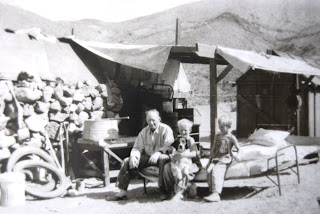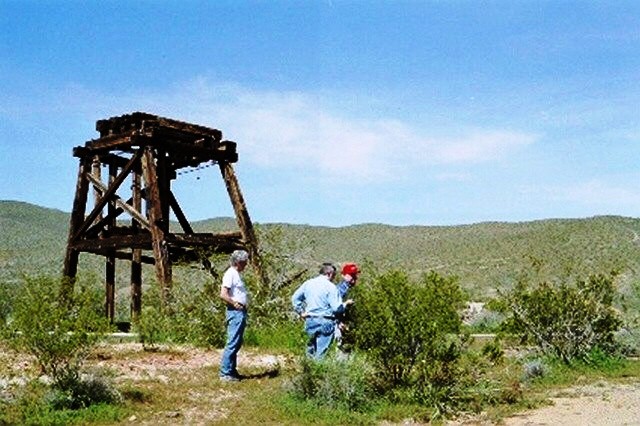This is a second post on a trip I took with Ralph to the northern Mojave in California. Click here to read about the morning at Goler Gulch.
Olga’s the first 94-year-old redhead I’ve met. I’m sure she has some artificial help; even so, her hair shows spunk. She gets around well and lives by herself. “I wouldn’t have it any other way,” she confesses. She still runs “The Joint,” pulling a regular shift, tending bar. When things are not busy, she steps out front and pull weeds from the flower bed. That’s where we first saw her. Ralph and I along with Bill and his friend had stopped in Randsburg for a late lunch after our tour of Goler Gulch. As we headed to a restaurant, Ralph mumbled something about it can’t Olga pulling flowers. He recognized the woman who none of us had seen.
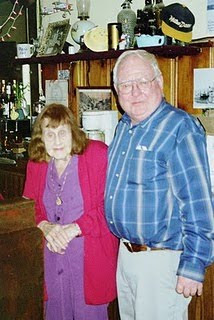
After lunch, Ralph and I walked down to “The Joint,” a bar in Randsburg. Olga’s washing glasses as we enter. She stops and turns to take our order. Olga doesn’t recognize Ralph, so he introduces himself. She looks at him for a minute, then smiles and comments about how much she misses his brother. He lived in the area and died a couple of years earlier. The two chat for a minute about Olga’s son, who was Ralph’s age. The two of them went off to war together in 1944. Ralph asked how long she’s been tending bar at “The Joint.” We learn she and her late-husband brought the establishment in 1955. “I’ve had honest work ever since,” she tells us. I was curious about what kind of work she’d done before but decide not to interrupt their reunion.
Selling booze in a mining town was lucrative business. Selling anything liquid use to be lucrative business as water in these parts was expensive, even as late as the ‘40s. Today, there is little mining and its mostly tourists who stop in want something alcoholic. The establishment is open from Wednesday through Sunday and they close in the evening when they are no longer busy. “The Joint” is in the heart of Randsburg’s business district and one of the original structures in town. The building was first a bakery. In the 30s, it was converted to a bar and a pool hall.
Ralph and I both order a couple of Mojave Greens, a local beer made in Inyokern and named for the famous rattlesnake of the Mojave. Ralph, who grew up in this area, said he’d only seen two of these snakes in his life. She pulls us two bottles out of the cooler, opens them, and ask if we want a glass. Ralph, always the civilized one, takes a glass and slowly pours his beer into it. I shake my head, grab the bottle and tip it up to drink. Ralph and Olga continue talking until Olga pauses to fix another drink for the woman sitting at the other end of the bar.
Its then I notice Faye, who’s sitting a few stools away and looking for a refill. I’m not sure why I hadn’t noticed her earlier as she wears a barely ample halter displaying more than ample breasts. She’s attractive or certainly could be. With her tight mini-skirt and heels which must be five inches high, I wonder what kind of business she’s in. We chat for a few minutes and learn she’s the proprietor of the Silver Dollar Saloon in Red Mountain. This is her day off.
The day before, when we drove through Red Mountain, Ralph had told me earlier about the red-light district there. It was a hoping place when he was a schoolboy before the war. The saloons in Red Mountain lined the west side of the street and featured backroom gambling. Gambling was illegal in California, but this wasn’t exactly on the main highway and most people looked the other way. On the east side of the street were “cribs,” where prostitutes who free-lanced in the bars and around the gambling dens, led their clients. It was a cozy arrangement, and local authorities did little to discourage business.
But then World War 2 came along. The Navy built a base on China Lake. Since there’s not enough water in China Lake to float a canoe most years, they used the base to train pilots. Naval authorities found that after a night of drinking, gambling and whoring, the drive over the mountain was too difficult to negotiate. They lost many pilots before they had a chance to sight in on a Japanese Zero. The Navy called in the FBI, who shut down the gaming establishments and ran the women off.
A few minutes later, Faye’s partner at the Silver Dollar joined us at the bar. While I’d enjoyed glancing over at Faye as we talked, I now divert my eyes. This guy is scary. His bare skinny legs end within fancy black leather cowboy boots, with pointed toes, and scroll threading. Personally, I think wearing cowboy boots without long pants should be a misdemeanor. Wearing cowboy boots with super tight short shorts, the kind which hadn’t been seen since the 80s, should be a felony! This guy’s pants are shorter than his partner’s mini skirt.
I’m glad I’m not alone in the bar with him. Had it just been me drinking and he came in, I think I’d wallowed over to the Methodist Church and take the temperance pledge. But he joins the conversation and seems to be an okay. However, he and Faye, to say the least, are one unique couple.
Ralph and I finish our beers and head out. The darkness in the bar forces our eyes to squint as we adjust to the bright desert sky. We take the long way back to Ridgecrest, through Inyokern. I tell Ralph about my one other trip to Inyokern. It was approaching midnight. I was with Eric, another friend of mine who Ralph knows. We’d been looking for a place to stop for the night. We were on our way to do a week hike from New Army Pass, to the Pacific Crest Trail and then up the backside of Mt. Whitney, and then north along the John Muir Trail to Onion Valley. And we wanted to get an early start the next morning so we kept driving late into the night.
Eric sighted a spotlight for an airport. As a pilot, he suggested we head there and camp, telling me about camping under his plane at such places. There was no one to stop us. I slept on one side of the car and Eric on the other. The night was warm. I laid out my pad and sleeping bag and slept on top. I must have been exhausted for I don’t remember anything else until 5:00 AM, when a loudspeaker rudely awaken me as it called out for those boarding the 5:30 AM flight to LAX. Shortly afterwards, we were on the road.
Ralph, who always had a way with words, quipped something about how Eric and I must not of been living right. Ralph and I had camped out when in the wilderness. But he felt if we’re going to stay in civilization, we should, at least, find a motel.
We drive back into Ridgecrest as the light softens. The shadows of the barren peaks provide definition to the distant hills in the low warm light. It’s nearly dark when we arrive. Unlike Randsburg, Ridgecrest is a new town, built during World War II. The purpose of the town is to serve the China Lake Naval base. We drive around, looking for a place for dinner. In our search, as we navigate ubiquitous four-way stop signs, But what amazed me of the town was to see not only had a dollar store, but also a 99-cent store and, for those who that’s even too much, a 98-cent store. Every place needs to be known for something.
